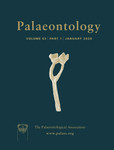Reg. Charity No. 1168330

The molecular clock provides the only viable means of establishing realistic evolutionary timescales but it remains unclear how best to calibrate divergence time analyses. Calibrations can be applied to the tips and/or to the nodes of a phylogeny. Tip‐calibration is an attractive approach since it allows fossil species to be included alongside extant relatives in molecular clock analyses. However, most fossil species are known from multiple stratigraphical horizons and it remains unclear how such age ranges should be interpreted to codify tip‐calibrations. We use simulations and empirical data to explore the impact on precision and accuracy of different approaches to informing tip‐calibrations. In particular, we focus on the effect of using tip‐calibrations defined using the oldest vs youngest stratigraphic occurrences, the full stratigraphical range, as well as confidence intervals on these data points. The results of our simulations show that using different calibration approaches leads to different divergence‐time estimates and demonstrate that concentrating tip‐calibrations near the root of the dated phylogeny improves both precision and accuracy of estimated divergence times. Finally, our results indicate that the highest levels of accuracy and precision are achieved when fossil tips are calibrated based on the fossil occurrence from which the morphological data were derived. These trends were corroborated by analysis of an empirical dataset for Ursidae. Overall, we conclude that tip‐dating analyses should, in particular, employ tip calibrations close to the root of the tree and they should be calibrated based on the age of the fossil used to inform the morphological data used in Total Evidence Dating.